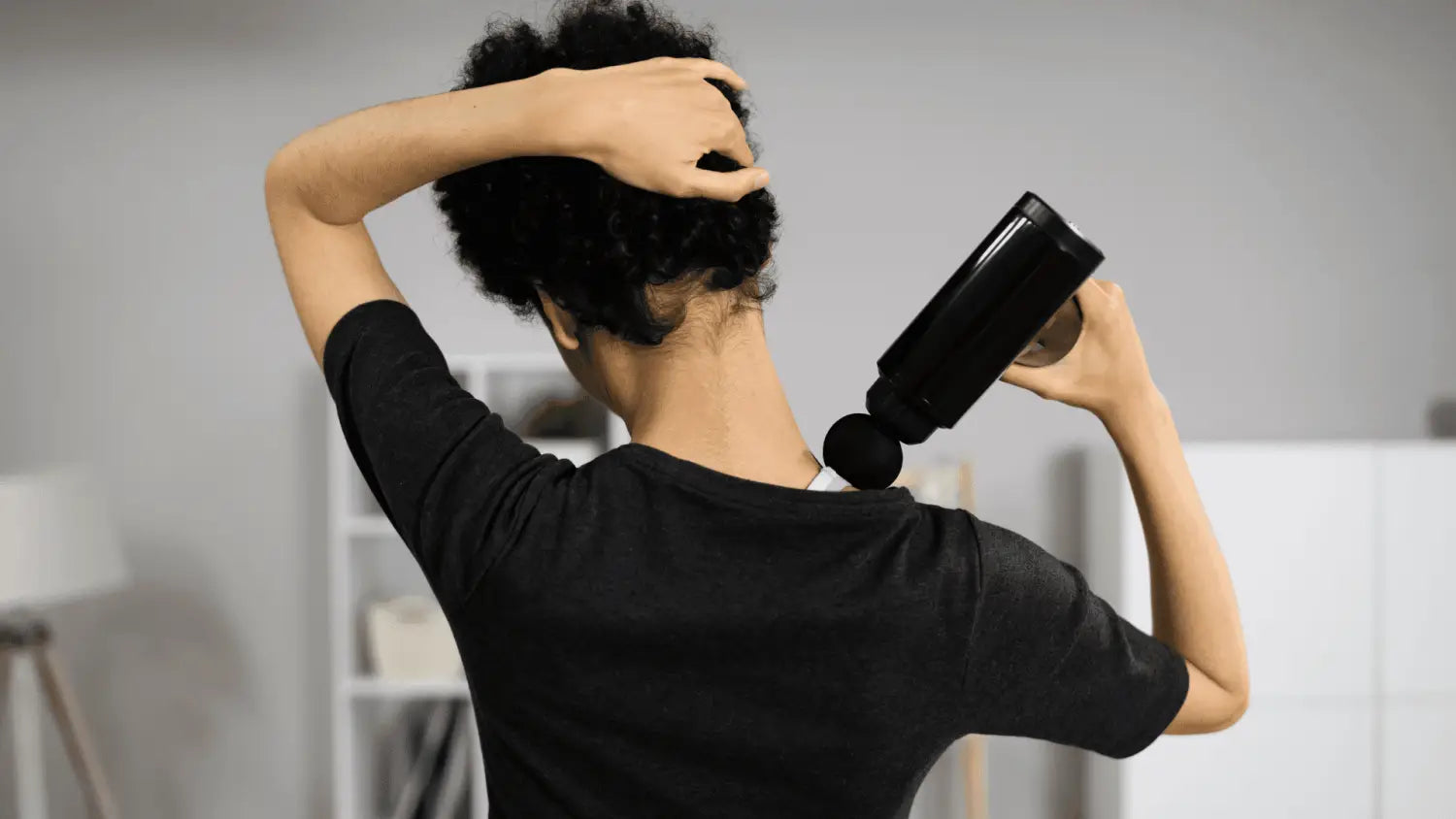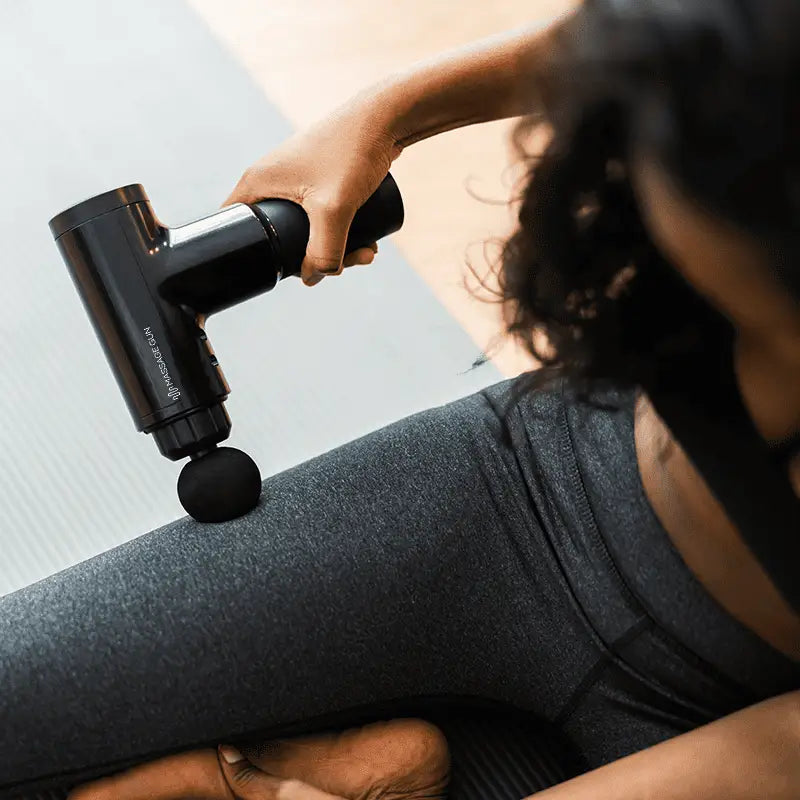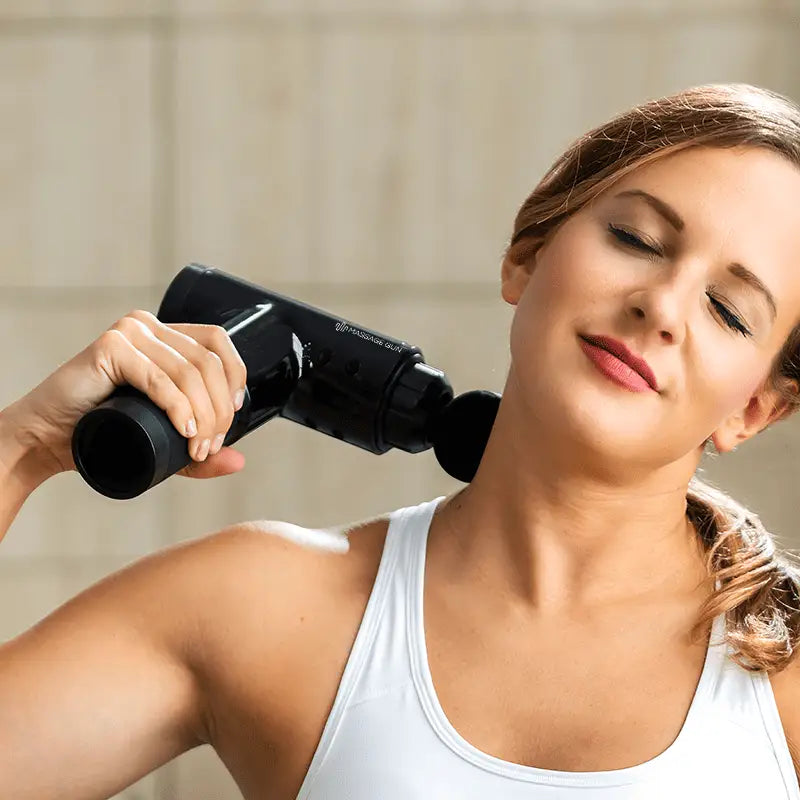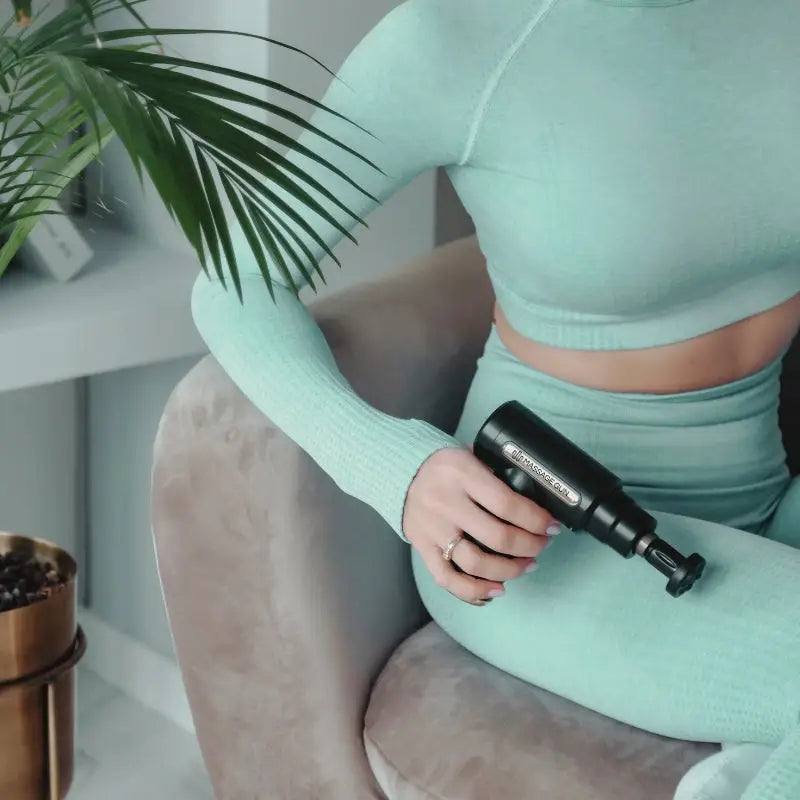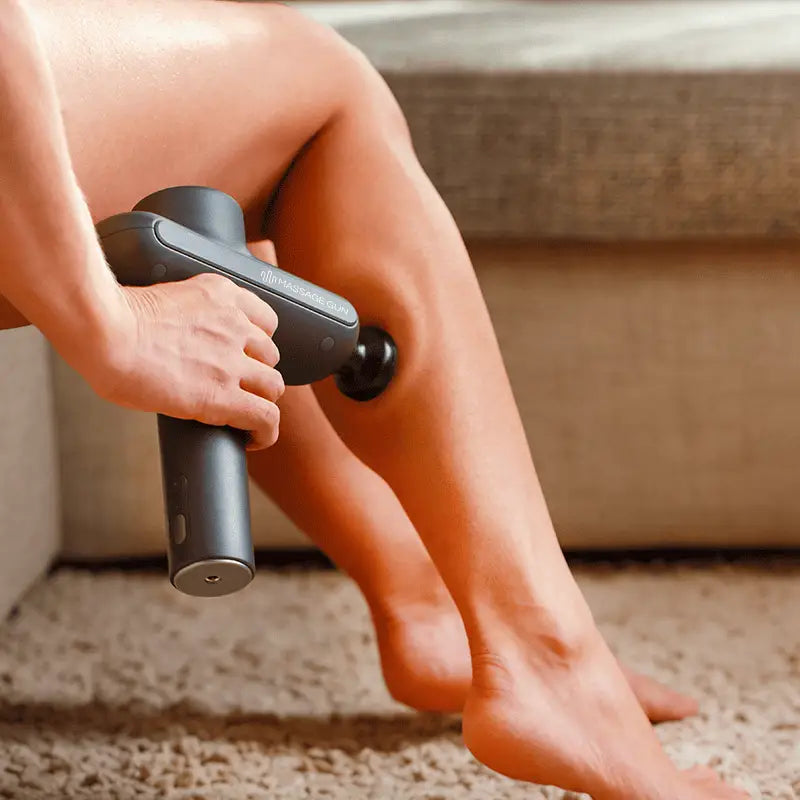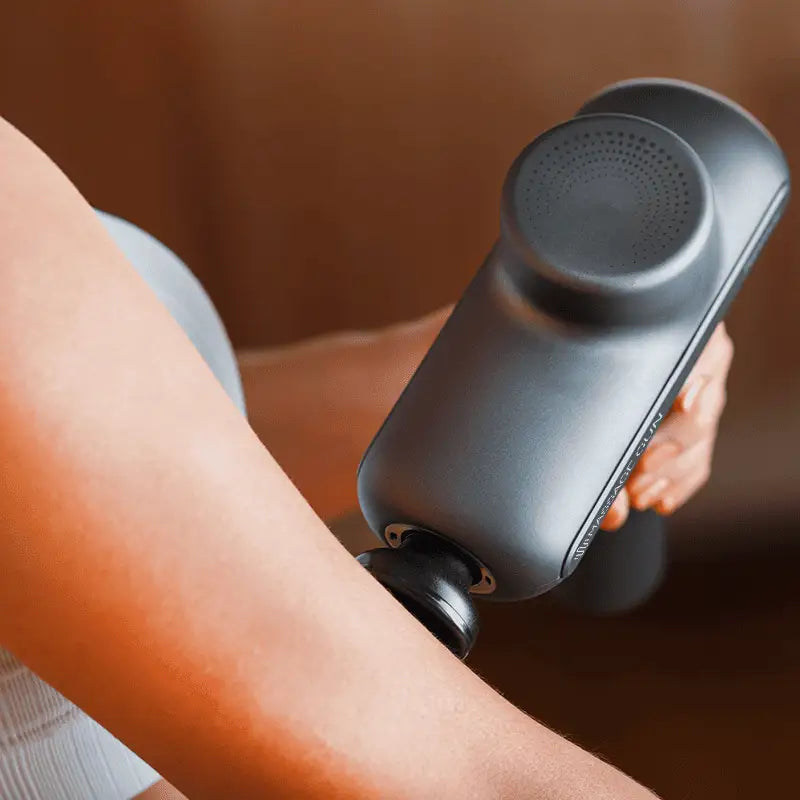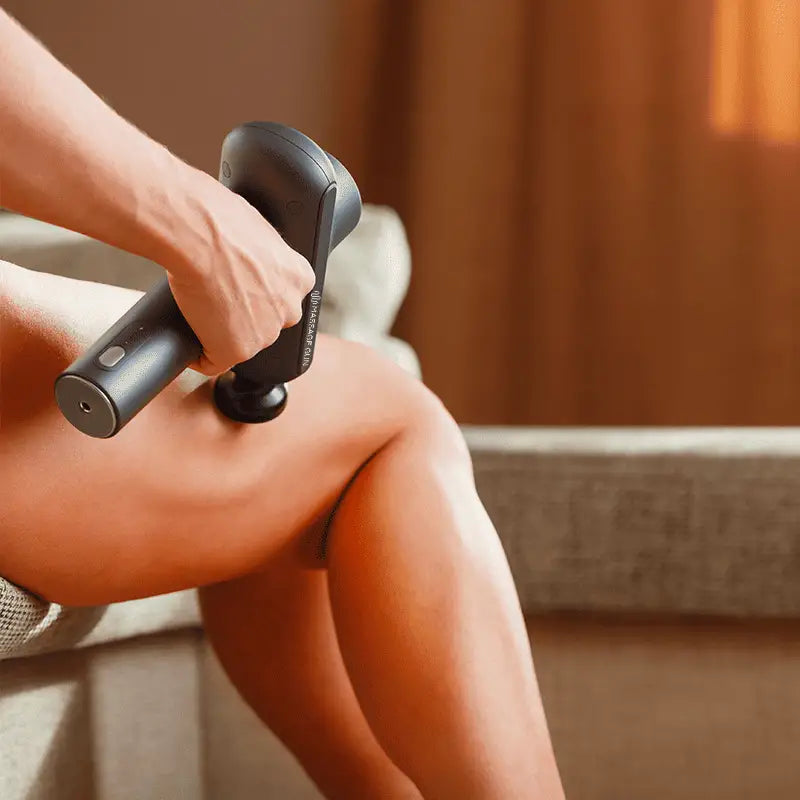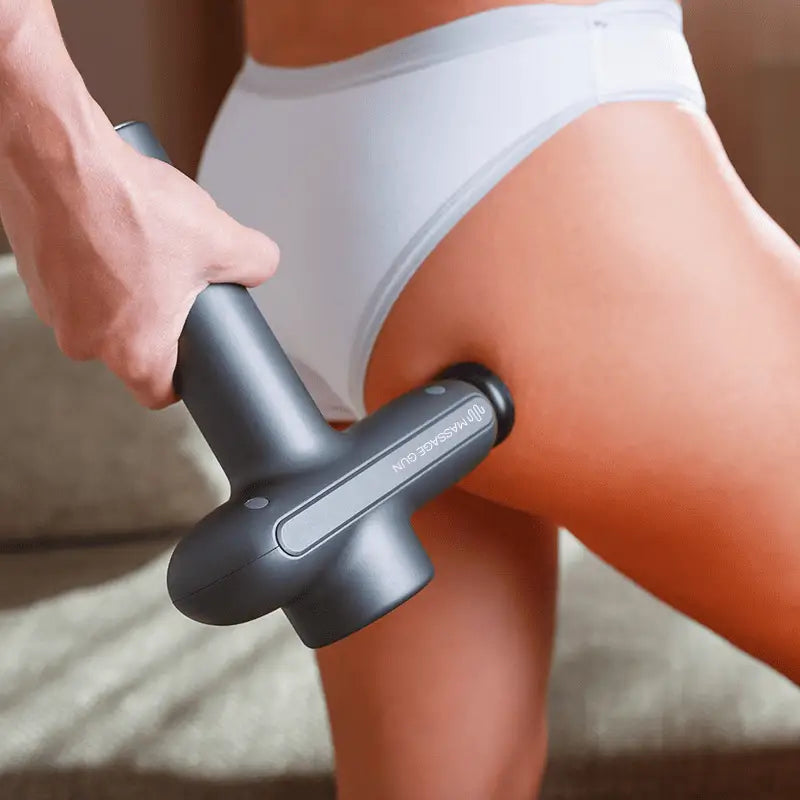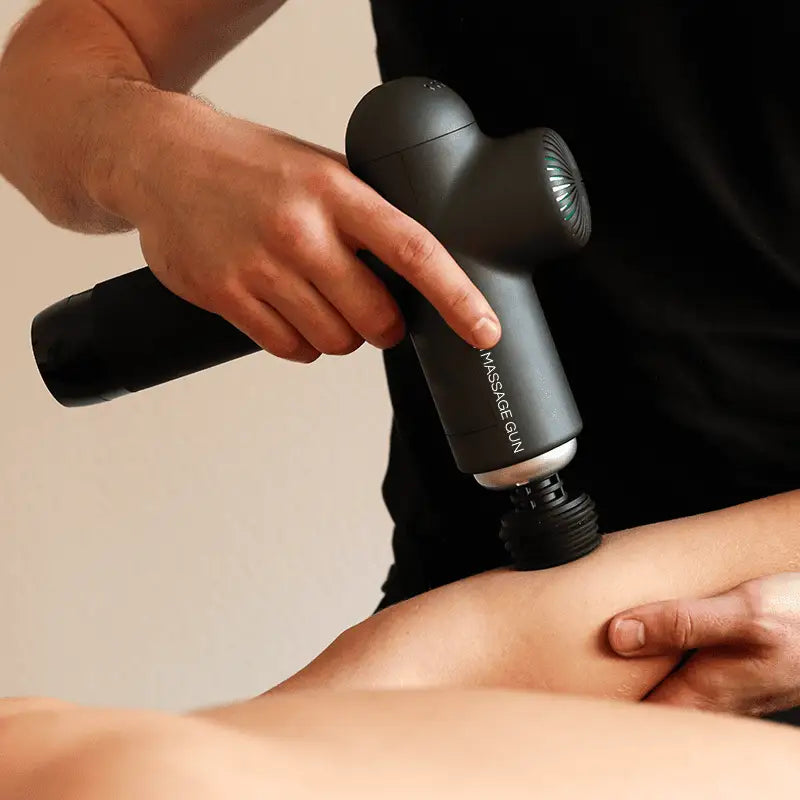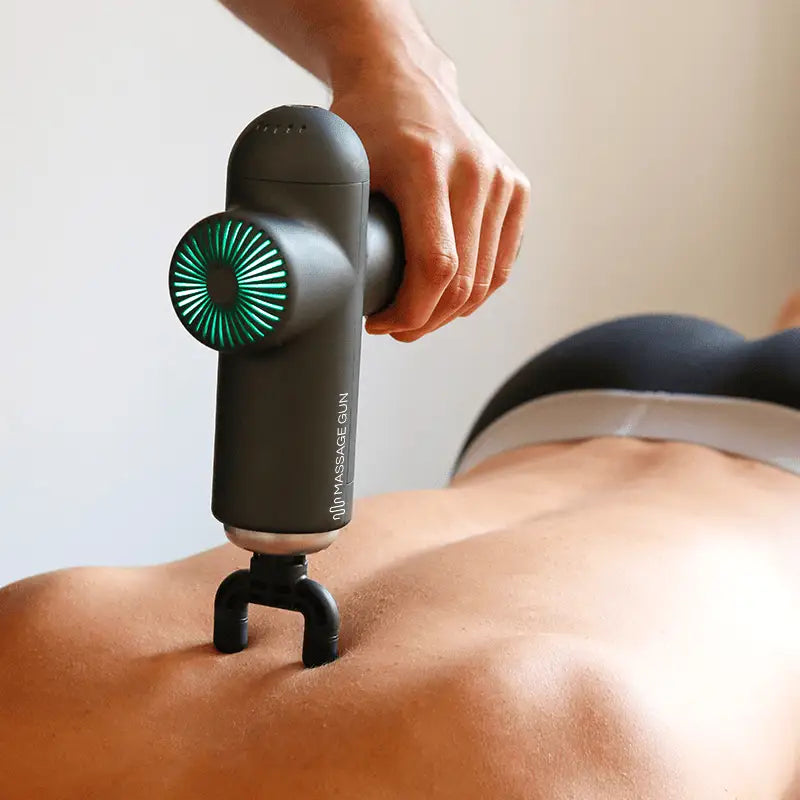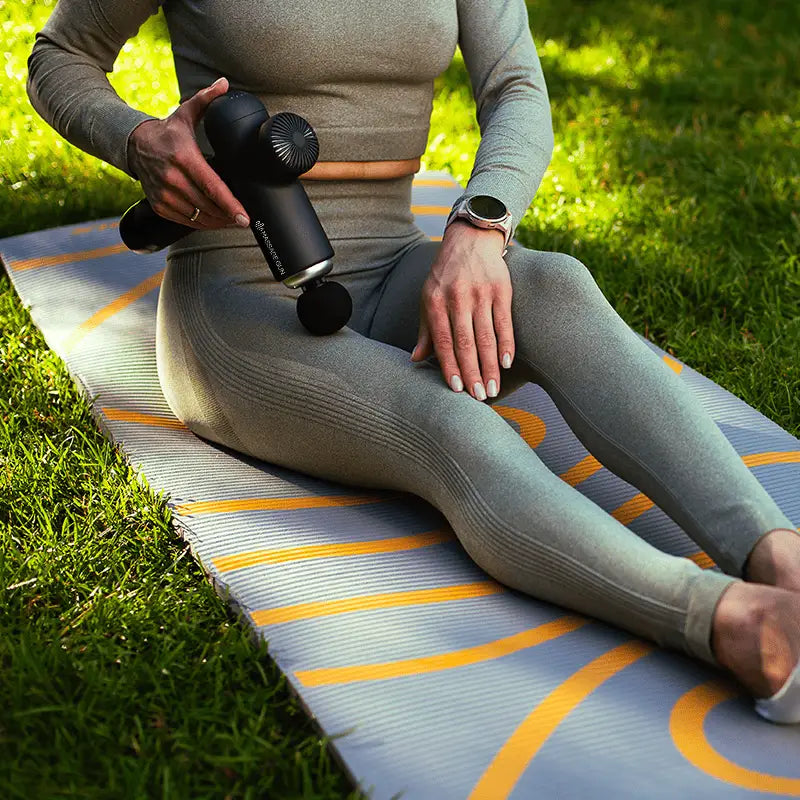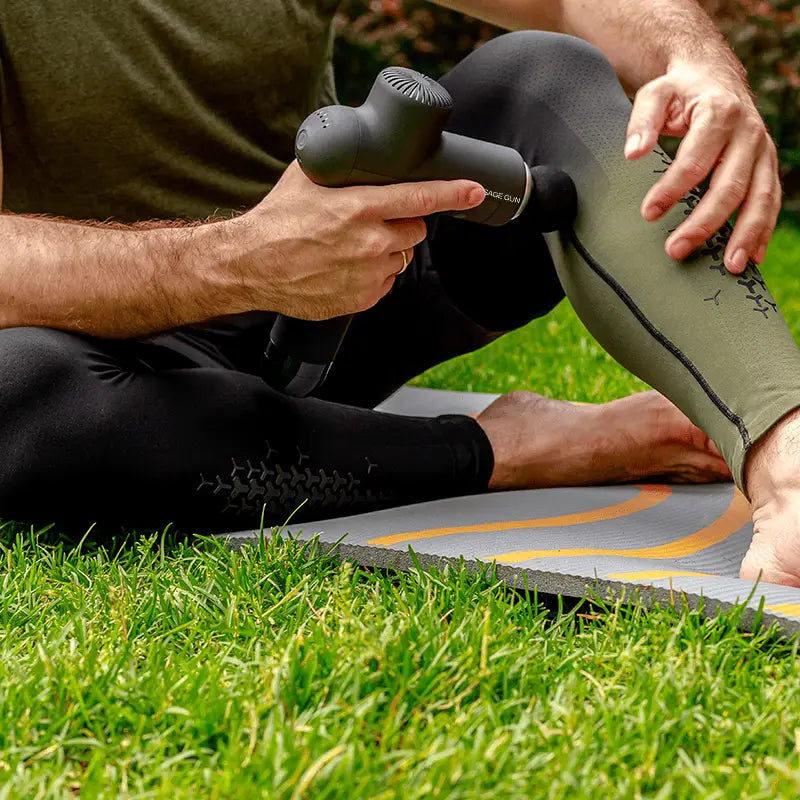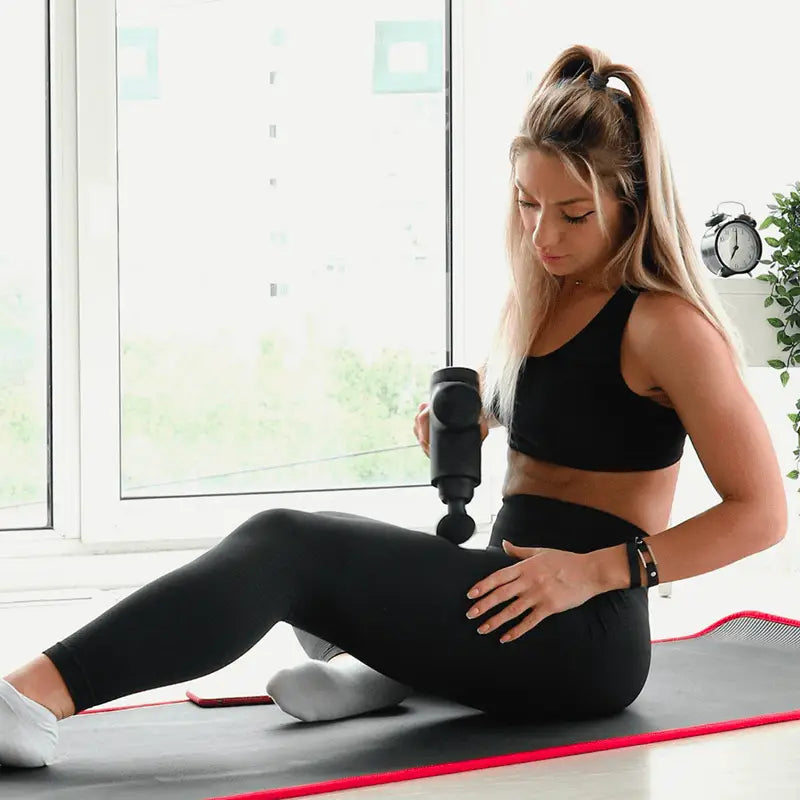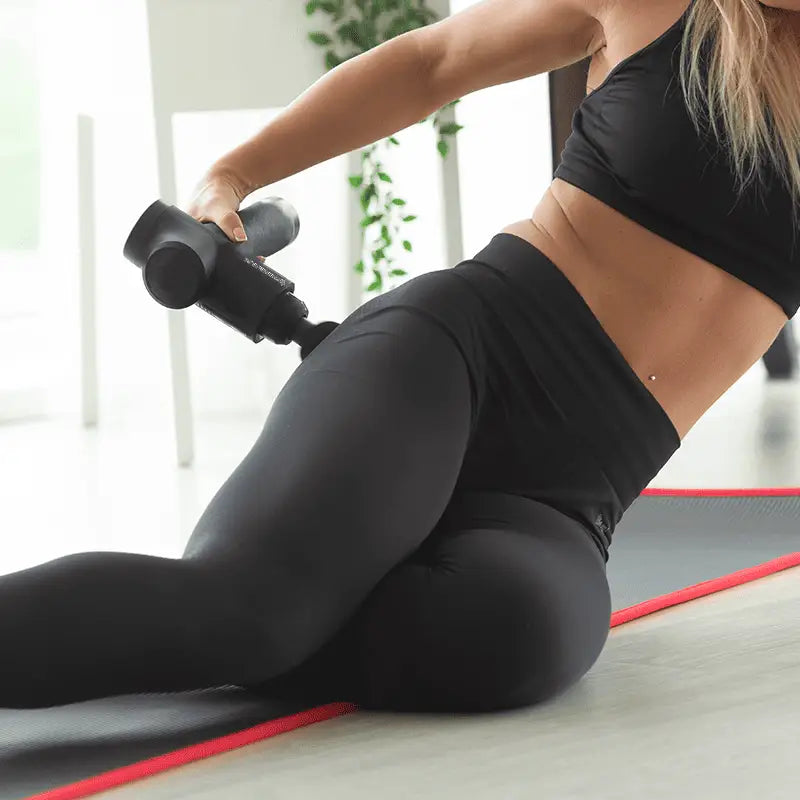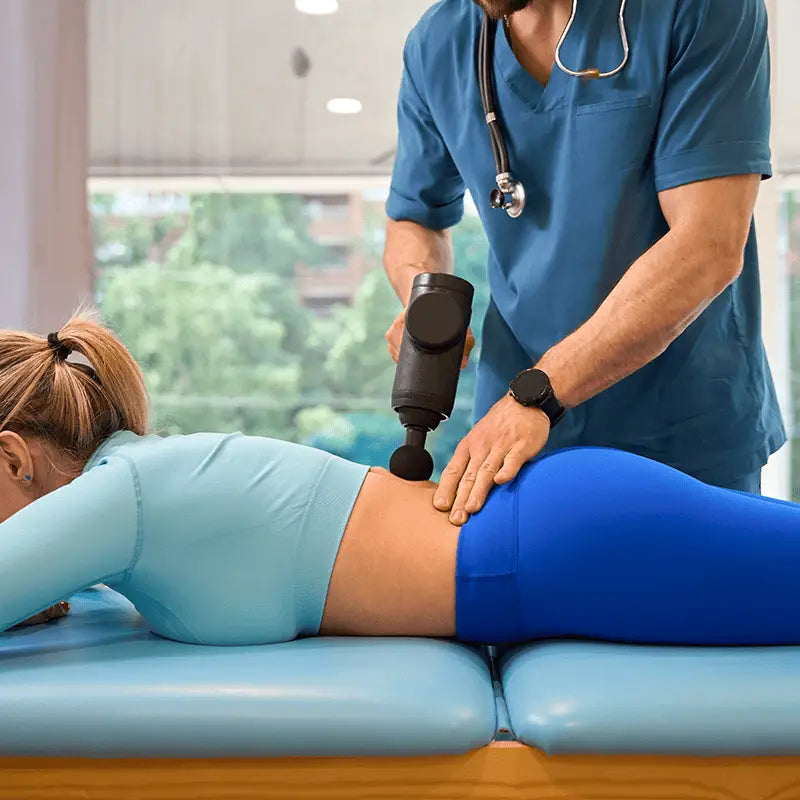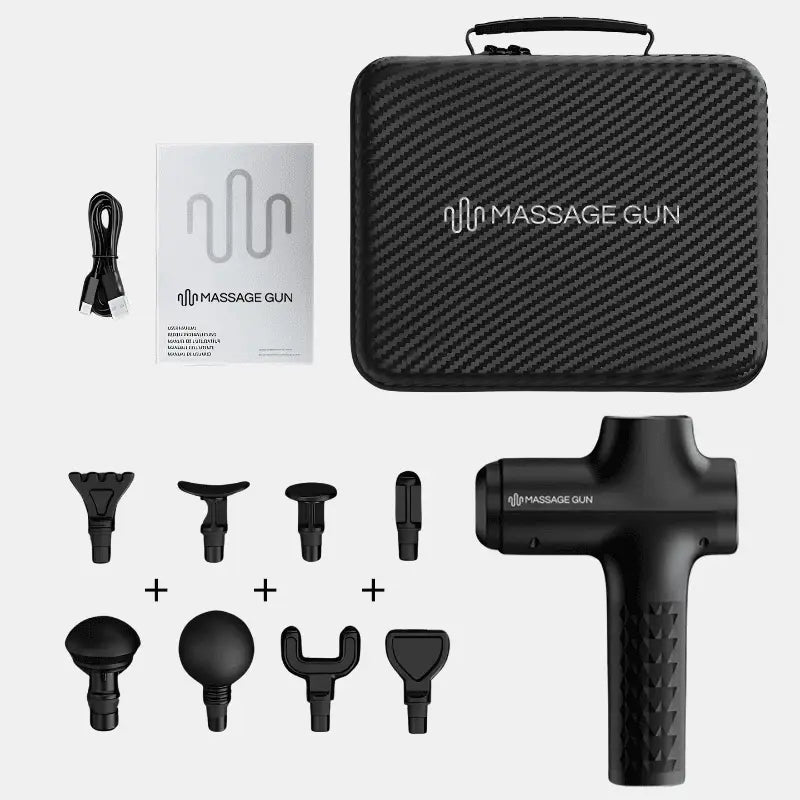Massage guns have become a popular tool for muscle recovery, but many wonder if these devices can also help break up fascia. Fascia is the connective tissue that surrounds muscles and organs, playing a critical role in mobility, flexibility, and overall physical health.
While massage guns are often used to reduce muscle soreness and tension after a workout, their effectiveness in breaking down fascial adhesions and improving blood flow to the tissue is still a subject of debate. This article explores how massage guns impact fascia and whether they are a reliable option for improving fascial health.
Understanding fascial tissues

What is fascia?
Fascia is a connective tissue that covers muscles, organs, and bones, providing structural support and facilitating smooth movement. It plays a crucial role in maintaining range of motion and mobility, as well as protecting muscles from injury. However, fascia can become tight and develop adhesions due to repetitive physical activity, injury, or prolonged periods of inactivity.
These adhesions can limit movement and increase the risk of muscle stiffness and pain. Healthy fascia is essential for enhanced recovery and athletic performance, making it a target for recovery tools like massage guns.
Importance of healthy fascia
Healthy fascia ensures smooth muscle function, prevents scar tissue formation, and allows for better mobility and flexibility. When fascia becomes tight or restricted, it can limit range of motion and cause muscle pain or discomfort.
Stretching, foam rolling, and deep tissue massage are commonly used to improve fascia health, but the role of percussive therapy in treating fascia is still being explored. Maintaining healthy fascia is key to improving blood circulation, reducing muscle stiffness, and enhancing performance during physical activities.
Can a massage gun break up fascia?
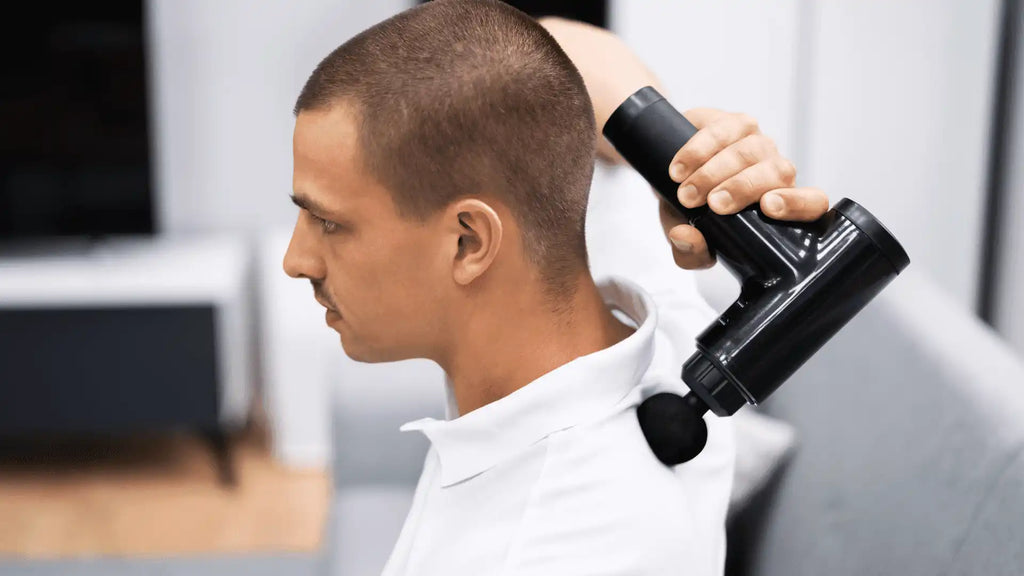
How massage guns work
Massage guns use percussion therapy, delivering rapid pulses of targeted pressure to the muscle and surrounding tissue. These handheld devices operate by stimulating blood flow to the affected areas, which helps reduce muscle tension, break down lactic acid, and release tight fascial tissues.
Theragun and similar massage guns are often used after workouts to provide relief from delayed onset muscle soreness (DOMS) and promote fascial release. While massage guns are effective in reducing tension, the scientific evidence on their ability to break up fascial adhesions is limited.
The science behind fascia and percussive therapy
There is growing interest in how percussive massage can affect fascia, but conclusive scientific evidence is still lacking. Percussive therapy is known to improve blood flow to the muscles and soft tissues, increasing oxygen and nutrients that aid in recovery. However, while this therapy may help relax superficial fascia, there is no clear evidence that it can break down deeper adhesions or scar tissue.
More systematic reviews and studies in sports medicine are needed to determine the long-term effects of massage guns on fascia. Percussion therapy is effective for short-term relief from muscle pain, but its impact on fascial release remains uncertain.
How massage guns affect scar tissue and adhesions
Massage guns are often touted as a way to break up scar tissue and adhesions, but this claim is mostly anecdotal. Some users report that using a massage gun on areas with scar tissue helps reduce discomfort and improve mobility, but this is not supported by robust scientific research.
Scar tissue is denser and tougher than regular fascial tissue, which makes it less responsive to percussive therapy. While massage guns may help with pain relief and blood circulation, addressing deeper issues such as scar tissue or chronic pain may require physical therapy or other manual treatments.
Best practices for using a massage gun on fascia
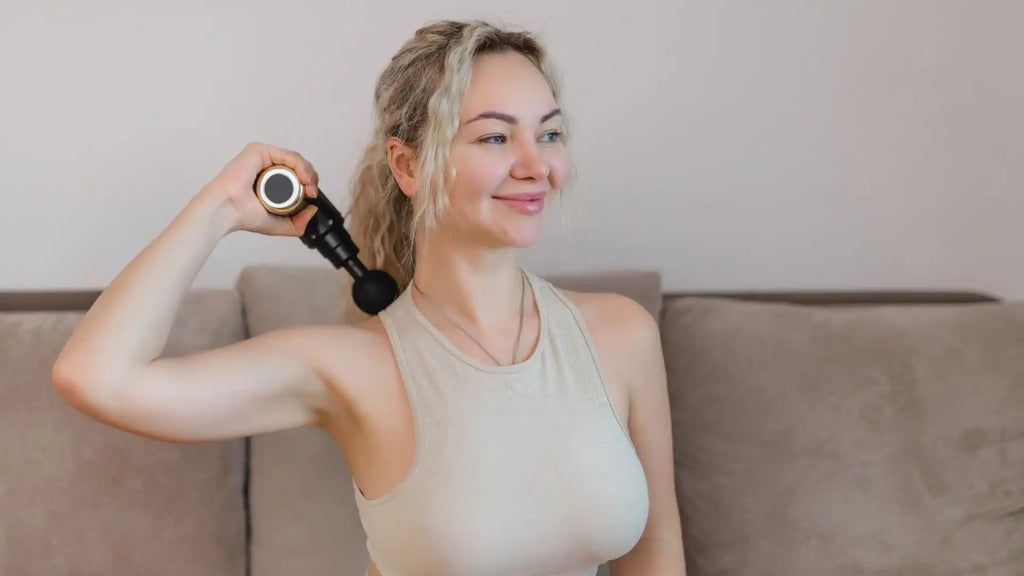
How to use a massage gun for myofascial release
Using a massage gun for myofascial release requires targeting specific areas where fascia is tight or restricted. The goal is to stimulate blood flow and reduce tension by applying gentle pressure. Start by using the gun on large muscle groups like the legs, back, and shoulders.
Slowly move the device over the tissue, allowing the vibration to penetrate and relax the fascia. Avoid staying on one spot for too long to prevent irritation. Always begin with a lower speed setting and gradually increase intensity as needed.
Key areas to target for fascial health
Key areas for fascial release include the hamstrings, IT band, lower back, and shoulders, which are prone to tightness and adhesions. Athletes often experience restricted movement in these regions due to repetitive motions or overuse.
By using a massage gun on these areas, you can improve range of motion, increase blood flow, and reduce muscle stiffness. However, be cautious when using the gun around joints or bony areas, as excessive pressure may cause discomfort or bruising. Combine the use of a massage gun with stretching and foam rolling for a more comprehensive recovery routine.
Duration and frequency of use
When using a massage gun for fascial release, it’s important to limit sessions to 5-10 minutes per muscle group. Overuse can lead to muscle damage or irritation, particularly in sensitive areas. Aim to use the gun 2-3 times a week to allow for proper recovery.
Avoid using the device immediately after injury or if you experience sharp pain during use. If used correctly, a massage gun can help reduce soreness, improve mobility, and enhance performance. Always listen to your body and adjust the pressure and intensity as needed.
How does fascia respond to different types of therapy?
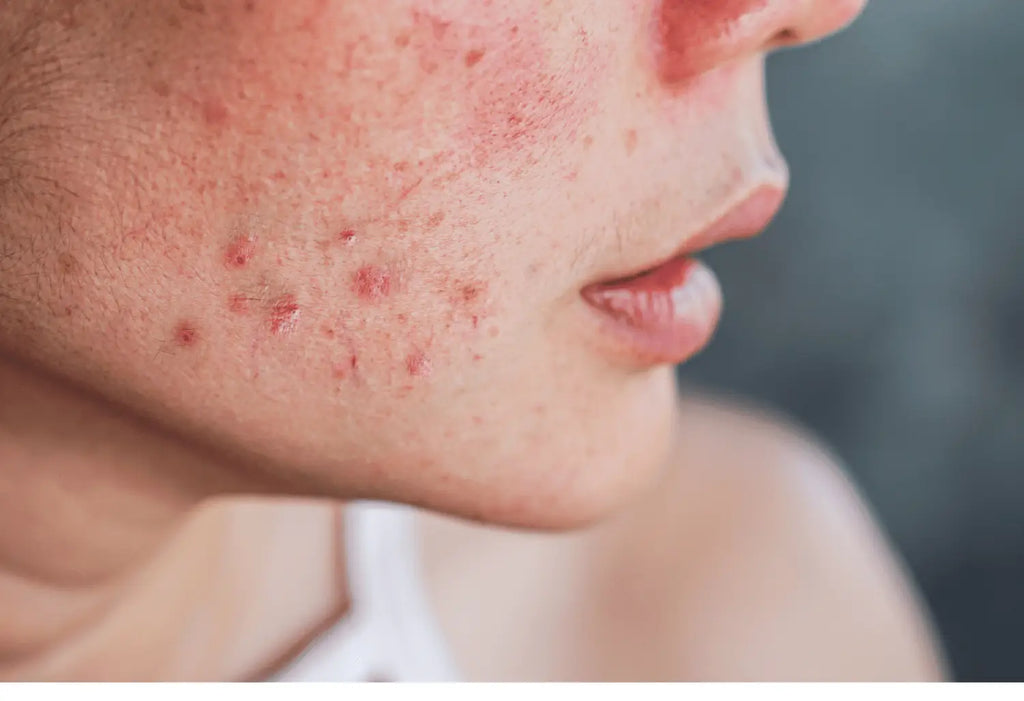
Fascia and manual therapy
Manual therapies such as foam rolling, deep tissue massage, and trigger point therapy are commonly used to treat tight fascia. These methods apply consistent pressure to the fascia, helping break down adhesions and improve mobility. Foam rollers provide a broader, more sustained pressure compared to massage guns, making them effective for deeper fascial release.
In contrast, massage guns offer a more targeted approach, which can be helpful for post-workout recovery. Combining both tools can provide comprehensive results for athletes and individuals looking to maintain healthy fascia.
Emerging therapies for fascial health
New treatments like fascial stretch therapy (FST) and cupping are gaining popularity for their ability to stretch and relax fascia, improving mobility and reducing pain. While percussive therapy from massage guns can be effective for short-term relief, these alternative therapies may offer longer-lasting benefits for those with chronic fascial issues.
Consulting a physical therapist to determine the best approach for your specific needs can help you get the most out of your recovery routine.
Potential risks and cons of using massage guns for fascial release

Overuse injuries and other risks
Using a massage gun too frequently or with too much intensity can lead to injury. Overuse can cause muscle damage, bruising, or overstimulation of the fascia. It’s important to avoid sensitive areas like joints and to use the gun as directed.
Percussive therapy is most effective when used in moderation as part of a balanced recovery routine. Always start with a lower setting and gradually increase the intensity to avoid injury.
Why a massage gun may not always be the best option
Although massage guns are great tools for relieving muscle tension, they may not be suitable for everyone. Some individuals may benefit more from manual therapies such as foam rolling or deep tissue massage, especially if they have chronic fascial issues.
While massage guns are effective for targeting surface-level tightness, they may not reach deeper tissues that require more sustained pressure. A combination of techniques, including stretching, foam rolling, and percussive therapy, can provide the best results for overall fascial health.
Choosing the right massage gun for fascial health
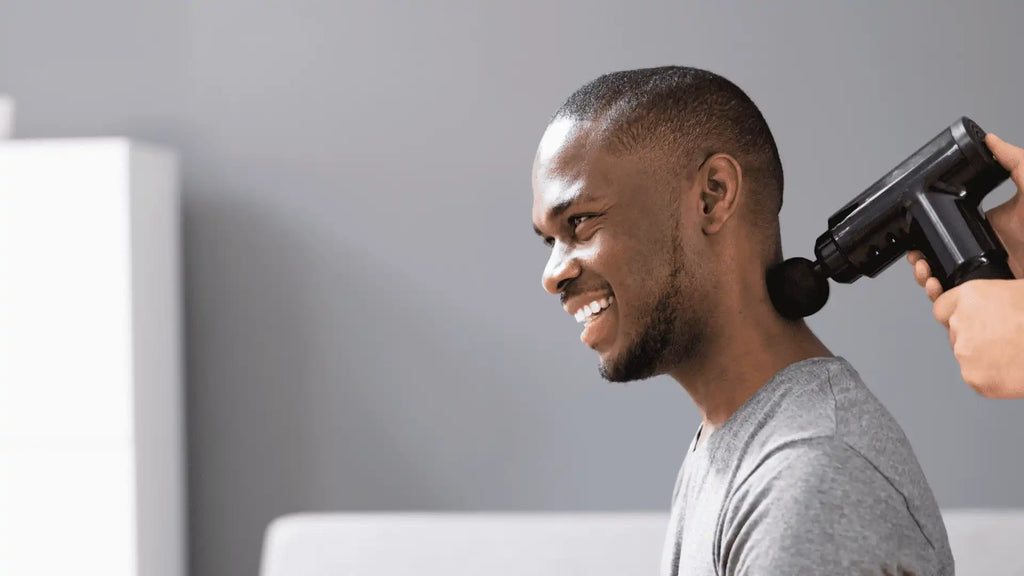
Features to look for in a massage gun
When selecting a massage gun for fascial release, it’s important to choose a model with adjustable speed settings, multiple attachment heads, and a comfortable ergonomic design. The ability to adjust intensity is crucial for targeting different areas of the body, especially delicate fascial tissues.
A wide range of attachments allows for customization based on the specific area being treated. Look for a device that is lightweight and easy to handle, especially for longer sessions.
Recommended massage guns for fascial release
Popular models like Theragun, Hypervolt, and TimTam are well-suited for fascial release due to their powerful motors and versatile attachments. These massage guns offer multiple intensity settings, making them ideal for both surface-level tension and deeper fascial work.
For those looking for more affordable options, brands like Ekrin and Achedaway also provide reliable options that offer similar benefits. Investing in a high-quality massage gun can enhance your recovery routine and improve mobility
Frequently asked questions
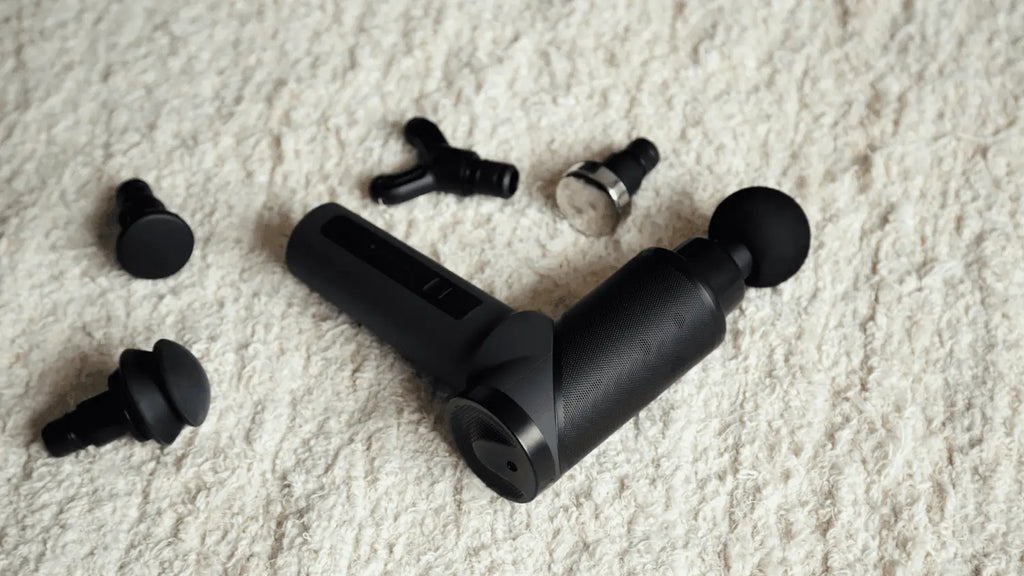
1. Does a massage gun really break up fascia?
A percussion massage gun can help release tension in fascia by delivering targeted vibrations that improve blood circulation and muscle tissue flexibility. However, while it may help with muscle soreness and reduce DOMS (delayed onset muscle soreness) after exercise, its ability to completely break up fascia or knots is debated.
The device works well in the short term for improving comfort and easing nervous stress, but deeper fascial release may require manual therapies like foam rollers or working with a massage therapist.
2. How does a massage gun affect fascia?
A massage gun uses percussion therapy to deliver rapid vibrations into muscle tissue and fascia, helping to increase blood flow and fluid movement, which can enhance recovery time. This vibration therapy improves blood circulation, aids in reducing tightness, and helps relieve muscle tension.
Although this myofascial release gun can offer comfort, it is primarily designed for post-workout recovery and may not fully eliminate fascial adhesions or treat conditions like cellulite.
3. Can a massage gun help with myofascial release?
Yes, a massage gun can assist in myofascial release, reducing DOMS and releasing tension in tight fascia. By applying percussion massage to specific areas, it stimulates blood vessels, improving fluid circulation and increasing blood flow to the fascia.
For those with sore muscles after a fitness session, the massage gun helps accelerate recovery by breaking down lactic acid and reducing muscle stress, particularly after an intense workout. It is, however, most effective when combined with foam rolling for long-term improvements.
4. Is a massage gun better than foam rolling for fascia?
When comparing a foam roller or massage gun, both have their benefits, but they work differently. A foam roller provides broad, consistent pressure, whereas a percussion massage gun delivers more targeted vibration therapy.
The massage gun is better for quick, targeted relief of muscle soreness, while foam rolling is often more effective for deep fascia massage and long-term recovery. Using both tools together can maximize the benefits of massage, especially after an exercise session or pre-workout to enhance mobility and performance.
5. Can a massage gun break down scar tissue in fascia?
A massage gun can help break down muscle tissue around scar tissue, increasing blood circulation and promoting cell growth. However, its effectiveness on deep scar tissue within the fascia is still unclear.
For proper treatment of scar tissue, especially in injured areas, a more manual approach may be needed, such as working with a massage therapist or engaging in physical therapy. Massage guns are excellent for short-term relief and improving comfort, but deeper, long-term fascia massage often requires additional techniques.
6. How often should you use a massage gun for fascia?
For optimal results, a massage gun should be used 2-3 times a day on sore or tight areas of fascia. Each session should last about 5-10 minutes per area, focusing on relieving muscle tension and improving mobility.
Overuse of the gun before or after a workout can lead to irritation or even injury if not used properly, especially around sensitive areas like the neck or skin. Combining its use with foam rollers can help reduce muscle soreness and shorten recovery time.
7. Can using a massage gun on fascia cause injury?
Yes, improper or repeated use of a massage gun can lead to injury, especially if used with too much pressure on sensitive areas like the head, neck, or joints. While massage guns are generally considered safe, it’s important to use them correctly and not for extended periods.
Massage gun therapy is designed to provide relief, but overstimulation can cause muscle damage, bruising, or irritation. To avoid injury, always follow proper use guidelines and consult a professional if you experience discomfort.
8. What are the benefits of using a massage gun on fascia?
The benefits of using a massage gun on fascia include improving mobility, increasing blood circulation, reducing post-workout muscle soreness, and helping to release tension. By delivering rapid, targeted pulses, the gun can relieve muscle stress, improve fluid movement in fascia, and aid in recovery after intense fitness activities.
It’s also an effective pre-workout tool to prepare muscles by reducing knots and enhancing flexibility. Additionally, some users report improved skin texture, such as a slight reduction in the appearance of cellulite.
9. How does a massage gun compare to other fascial treatments?
A massage gun offers quick, targeted relief and is more convenient than traditional manual therapies like foam rolling or deep tissue massage. However, while it’s great for short-term relief of DOMS, sore muscles, and tight fascia, it may not fully address deeper adhesions or scar tissue.
More comprehensive treatments like physical therapy, stretching, or fascial stretch therapy (FST) provide deeper and longer-lasting benefits. The gun benefits are most noticeable when used in conjunction with these other fascial health practices.
10. Is a massage gun safe for everyone to use on fascia?
While massage guns are generally considered safe, they may not be suitable for everyone. People with existing injuries, very sensitive skin, or certain conditions like fragile blood vessels should consult a massage therapist or healthcare professional before using a massage gun.
Always start with a lower intensity to ensure comfort, and avoid sensitive areas like the neck or joints. For the safest results, follow the manufacturer’s guidelines and ensure you use the gun properly to avoid injury or muscle damage.


